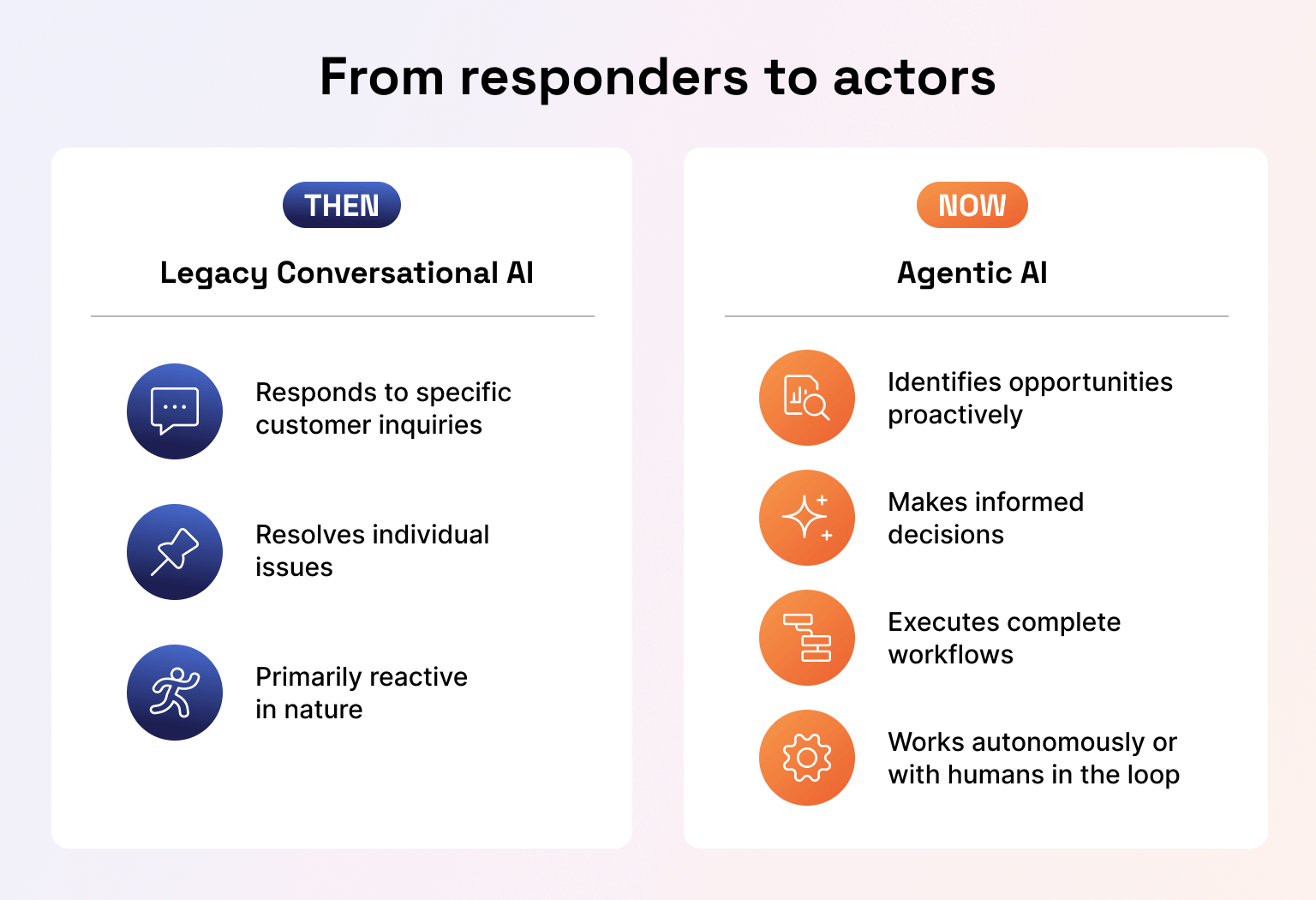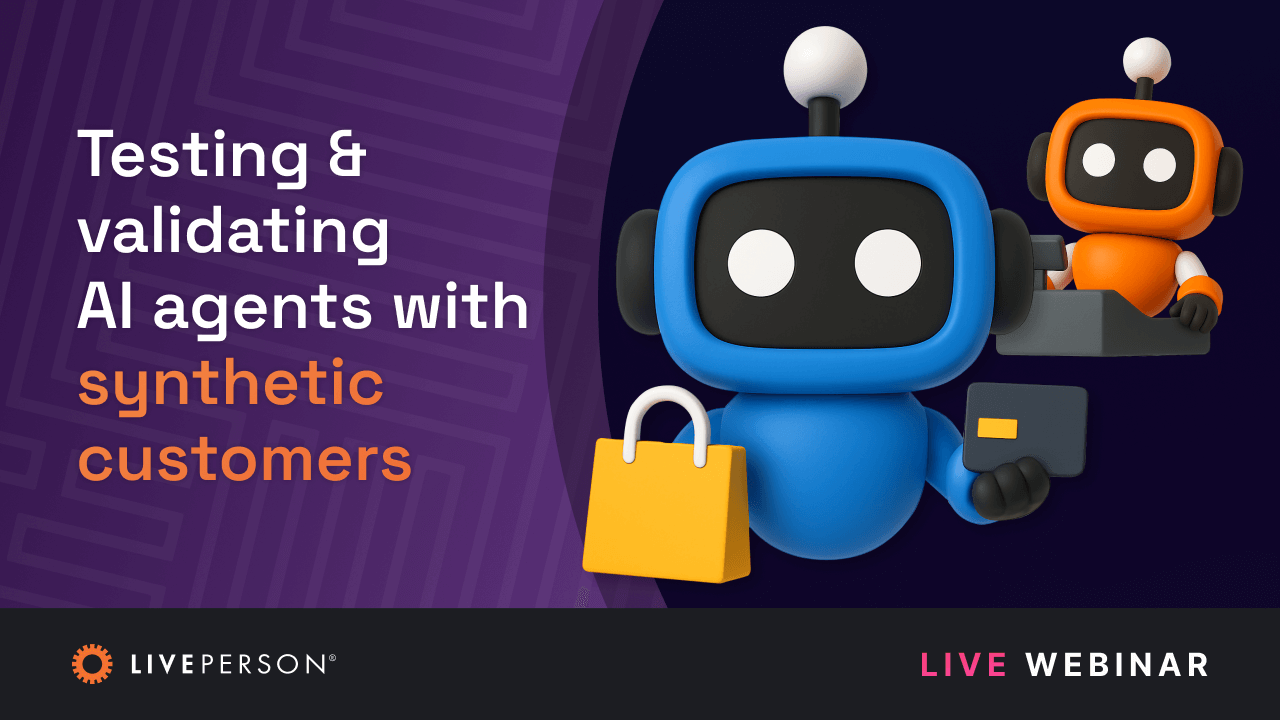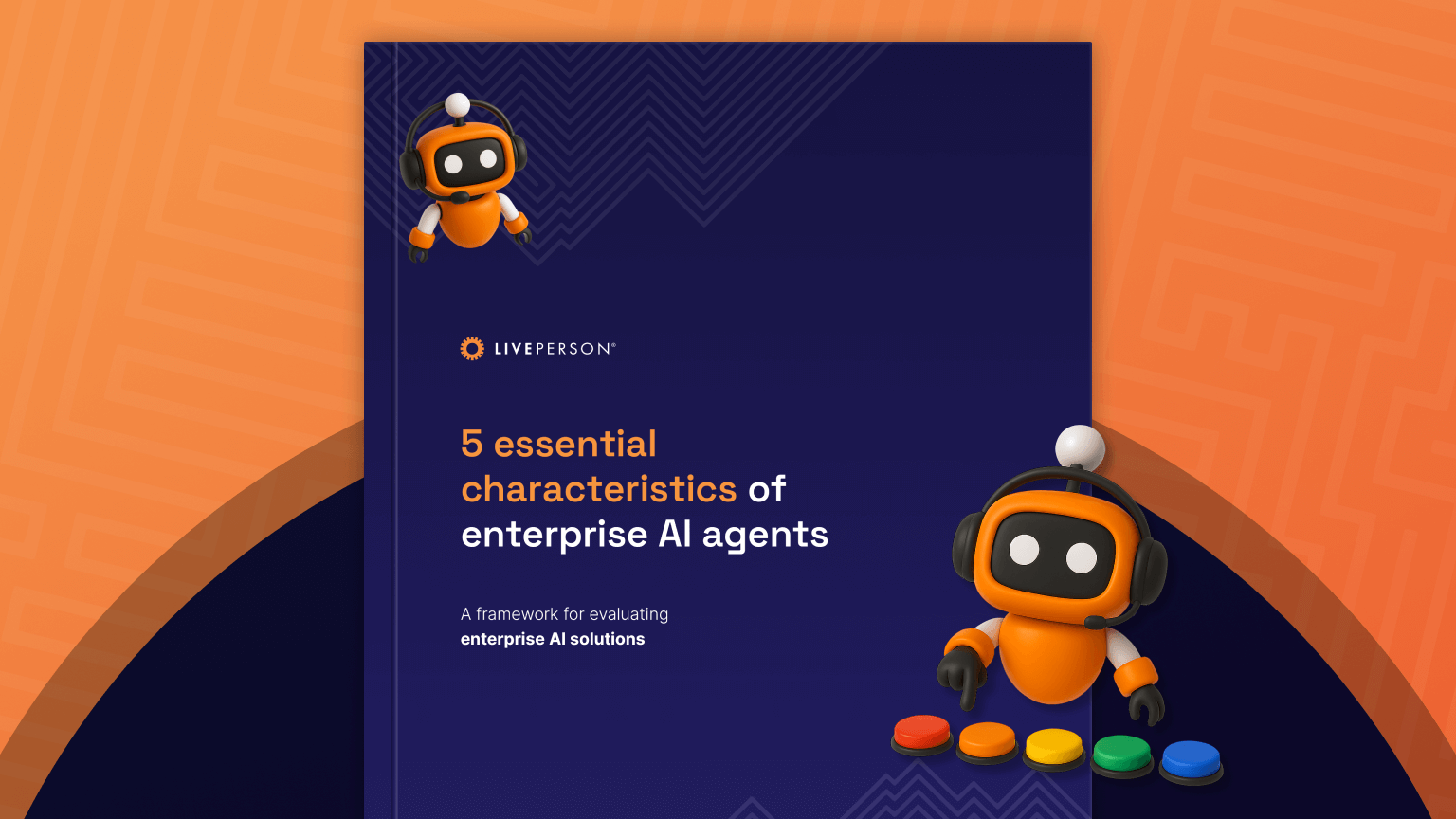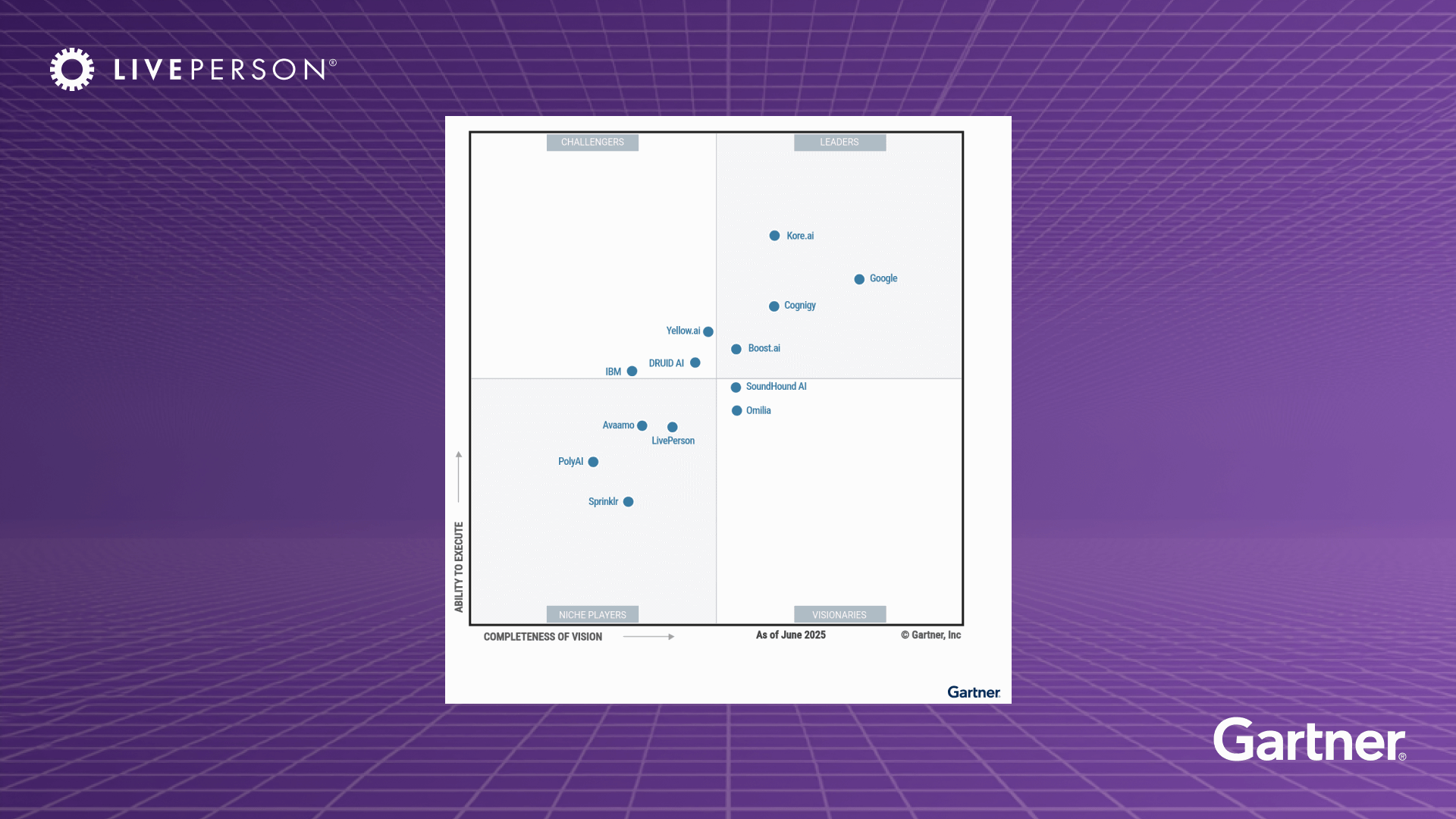article
The evolution of conversational AI: Enter the era of agentic AI systems
August 25, 2025 • 8 minutes

Over the past decade, conversational AI has transformed how brands interact with their customers, moving from basic scripted chatbot technology to sophisticated natural language systems capable of resolving complex queries. These systems have become increasingly adept at understanding context, maintaining dialogue flow, and providing personalized responses at scale.
But according to the latest Gartner® research, we’re entering a new chapter within conversational AI: the rise of agentic AI.
Agentic AI refers to autonomous software agents that can act on behalf of a business, taking initiative, making decisions, and completing increasingly complex tasks with minimal human intervention. Where traditional conversational AI is prescriptive or reactive, agentic AI is proactive and capable of handling complex customer interactions.
From responders to actors

The shift from legacy conversational AI to platforms that now incorporate agentic AI represents a fundamental evolution in how artificial intelligence operates within enterprise environments. While traditional conversational AI does well at responding to specific customer inquiries and resolving individual issues, agentic AI takes the next step by identifying opportunities, making informed decisions, and executing complete workflows autonomously or with a human in the loop.
Gartner predicts that by 2029, 80% of customer support issues will be resolved autonomously, cutting operational costs by up to 30%. This represents not just an incremental improvement, but a structural change in how customer engagement works.
Key shifts include:
- Proactive resolution: Specialized AI agents will identify and address customer needs before they become problems, monitoring for patterns and taking preventive action.
- Multi-channel context: Virtual assistants operate seamlessly across voice, chat, email, and APIs, carrying complete context and history with them regardless of channel.
- Full-workflow ownership: Tasks traditionally split between multiple systems and teams can now be executed by a single, coordinated AI entity that manages the entire process from start to finish.
Why is this evolution of conversational AI happening now?
Several industry forces are converging to make agentic AI viable at scale, building on the foundation that conversational AI has already established:
- Mature API ecosystems: Modern enterprises are building robust integration landscapes that make it easier for AI systems to connect with existing business applications, databases, and workflow tools.
- Advances in automation & orchestration: New frameworks enable more reliable handoffs between AI agents, AI chatbots, and human teams. This orchestration layer ensures that autonomous actions align with business rules, compliance requirements, and quality standards.
- Governance and trust frameworks: Organizations now have clearer policies and better tools for ensuring AI actions remain transparent, accountable, and compliant with regulations. This governance foundation makes autonomous operation viable even in heavily regulated industries.
- Proven conversational AI foundation: The success of conversational AI has created organizational confidence in AI systems and established the infrastructure, processes, and cultural acceptance necessary for more autonomous AI operations.
Gartner research shows 64% of enterprises plan to adopt agentic AI within the next year, signaling an inflection point in market adoption.
The AI vendor race is changing
Another key insight from Gartner: The AI race is shifting from “model supremacy” to domain-specific outcomes. The companies that built successful conversational AI platforms are now best positioned to extend into agentic capabilities because they understand the operational realities of enterprise AI deployment.
The next wave of leaders will be those who:
Deliver proven business results, not just impressive demos:
Success requires understanding how AI integrates with existing business processes, compliance requirements, and operational workflows.
Offer adaptability in the face of shifting buyer needs and regulatory uncertainty:
The regulatory landscape for AI continues evolving, requiring platforms that can adapt quickly while maintaining operational stability.
Build AI-native applications, not just wrappers around large language models:
True agentic capability requires purpose-built orchestration, governance, and integration capabilities that go far beyond basic LLM interfaces.
In other words, success will belong to those who combine deep domain knowledge with the ability to orchestrate AI agents across complex workflows. This is where the experience gained from deploying conversational AI at scale becomes invaluable.
The role of generative AI services
The rapid expansion of the generative AI consulting and services market underscores a critical reality: Successful AI transformation requires more than technology. Enterprises need partners who can guide them from pilot projects to customer-facing AI agents.
When AI systems can take autonomous actions that affect customer relationships, financial transactions, and business operations, the implementation strategy becomes crucial. Organizations need expertise in:
- AI maturity assessment: Understanding their readiness for autonomous agents and identifying the right starting points for agentic AI deployment.
- Orchestration architecture: Designing systems that can coordinate multiple AI agents, existing business applications, and human teams effectively.
- Governance implementation: Building trust through compliance frameworks, transparency mechanisms, and ethical AI practices.
- Change management: Helping teams adapt to working alongside autonomous agents and redefining roles for maximum impact.
How enterprises can get ahead
The shift from traditional conversational AI to agentic AI work builds on existing investments rather than replacing them. Organizations that have successfully deployed conversational AI are already ahead in several critical areas:
- Established AI infrastructure: The technical foundation, data pipelines, and integration frameworks that power conversational AI provide the base layer for agentic capabilities.
- Organizational AI readiness: Teams that have learned to work with conversational AI understand how to design processes that incorporate AI capabilities effectively.
- Customer acceptance: Customers who are comfortable interacting with conversational AI systems are more likely to accept and benefit from proactive agentic interactions.
- Proven ROI models: Organizations with successful conversational AI deployments have established metrics and business cases that can extend to agentic applications.
The enterprises that will succeed in this new era will:
- Assess AI maturity early: Understand their readiness for autonomous agents and build on existing conversational AI success.
- Invest in orchestration: Ensure smooth collaboration between AI agents, existing systems, and human teams through sophisticated coordination capabilities.
- Prioritize governance: Build trust through compliance, transparency, and ethical AI practices that extend across both conversational and agentic systems.
- Focus on measurable outcomes: Tie AI investments directly to business KPIs, using proven models from conversational AI to guide agentic AI ROI.
The orchestration advantage

Here’s where the evolution of conversational AI to agentic requires a new level of sophistication. Agentic AI systems demand orchestration that can govern how the AI agents interact with each other, with existing systems, and with human team members.
Without proper orchestration, autonomous agents can create new challenges:
- Compliance risks: Autonomous actions might inadvertently violate regulatory requirements or internal policies without proper oversight.
- Integration failures: Agents might make decisions based on incomplete or outdated information from disconnected systems.
- Inconsistent experience: Different agents might apply different standards or approaches, leading to inconsistent customer experiences.
Effective orchestration solves these challenges by providing:
- Centralized governance: Clear rules about what actions AI agents can take, under what circumstances, and with what approval processes.
- Unified data context: A single source of truth that ensures all agents, whether conversational AI, agentic AI, or human, work from the same information.
- Intelligent routing: Smart decision-making about when to escalate to humans, transfer between agents, or coordinate multiple agents to automate complex tasks.
- Performance monitoring: Real-time visibility into how well the entire ecosystem is performing, with the ability to adjust and optimize continuously.
Bottom line
The next chapter in AI-powered engagement is not about replacing conversational AI or humans. It’s about creating intelligent, autonomous systems that handle complex conversations while elevating both conversational AI and human expertise, leading to more human-like interactions with customers.
The Gartner analysis makes it clear: The era of agentic AI is here, and the clock is ticking for enterprises to prepare. Those who have invested in strong conversational AI foundations are best positioned to make this transition successfully, but only if they also invest in the orchestration capabilities that make autonomous agents truly effective.
The shift is already underway. The question isn’t whether agentic AI will transform enterprise operations, but whether your organization will be ready to harness its potential when the transformation accelerates.
Get the full 2025 Gartner Magic Quadrant for Conversational AI Platforms
GARTNER is a registered trademark and service mark of Gartner, Inc. and/or its affiliates in the U.S. and internationally, and MAGIC QUADRANT is a registered trademark of Gartner, Inc. and/or its affiliates and are used herein with permission. All rights reserved.
Gartner does not endorse any vendor, product or service depicted in its research publications, and does not advise technology users to select only those vendors with the highest ratings or other designation. Gartner research publications consist of the opinions of Gartner’s research organization and should not be construed as statements of fact. Gartner disclaims all warranties, expressed or implied, with respect to this research, including any warranties of merchantability or fitness for a particular purpose.
Sources:
CX Today, Gartner Predicts that Agentic AI Will Solve 80 Percent of Customer Problems by 2029, Floyd March, 5 March 2025, https://www.cxtoday.com/contact-center/agentic-ai-gartner-predicts-80-of-customer-problems-solved-without-human-help-by-2029/?utm_source=chatgpt.com
HiddenLayer, Securing Agentic AI: A Beginner’s Guide, 1 April 2025, https://hiddenlayer.com/innovation-hub/securing-agentic-ai-a-beginners-guide/





